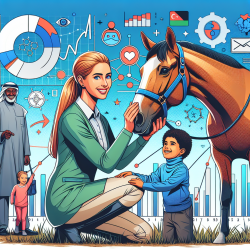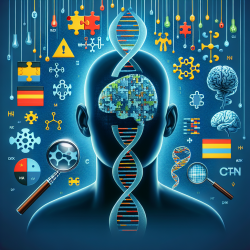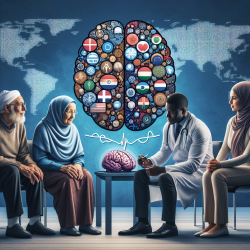Introduction
As a speech-language pathologist, the quest for innovative, evidence-based interventions is paramount to enhancing therapeutic outcomes, particularly for children. Equine-Assisted Activities and Therapies (EAAT) have emerged as a promising adjunctive approach, especially in the context of treating posttraumatic stress disorder (PTSD) in veterans. The recent research article, Equine-Assisted Activities and Therapies for Veterans With Posttraumatic Stress Disorder: Current State, Challenges and Future Directions, offers valuable insights that can be adapted and applied within the field of speech-language pathology to benefit children with various communicative disorders.
Understanding EAAT
Equine-Assisted Activities and Therapies encompass a range of interventions involving horses, aimed at improving psychological, emotional, and social well-being. For veterans with PTSD, these therapies have shown potential in reducing symptoms and enhancing overall quality of life. The human-horse bond is central to EAAT, offering a unique therapeutic dynamic that can be harnessed in speech-language pathology.
Data-Driven Implementation
To effectively integrate EAAT into speech-language therapy, practitioners must rely on data-driven decisions. The research emphasizes the need for standardized nomenclature and intervention models, which can be adapted to suit the needs of children with speech and language disorders. By focusing on the mechanisms of action, such as the human-horse bond and the safe, nonjudgmental environment horses provide, speech-language pathologists can develop tailored interventions that foster communication skills and emotional resilience in children.
Potential Benefits for Children
While the research primarily focuses on veterans, the principles of EAAT can be extrapolated to benefit children with communication disorders. Potential benefits include:
- Enhanced Communication Skills: Interacting with horses may encourage children to express themselves more freely, facilitating improvements in verbal and non-verbal communication.
- Emotional Regulation: The calming presence of horses can help children manage anxiety and stress, promoting better emotional regulation.
- Social Skills Development: EAAT can provide opportunities for children to develop social skills in a supportive environment, enhancing their ability to interact with peers and adults.
Encouraging Further Research
Despite the promising preliminary findings, the field of EAAT requires further rigorous research to establish its efficacy definitively. Speech-language pathologists are encouraged to engage in or support research initiatives that explore the application of EAAT in pediatric populations. By contributing to the body of evidence, practitioners can help refine these interventions, ensuring they are grounded in solid empirical data.
Conclusion
Equine-Assisted Activities and Therapies hold significant promise as a complementary approach in speech-language pathology, particularly for children with communication disorders. By integrating data-driven practices and supporting ongoing research, practitioners can enhance therapeutic outcomes and contribute to the advancement of this innovative field.
To read the original research paper, please follow this link: Equine-Assisted Activities and Therapies for Veterans With Posttraumatic Stress Disorder: Current State, Challenges and Future Directions.










